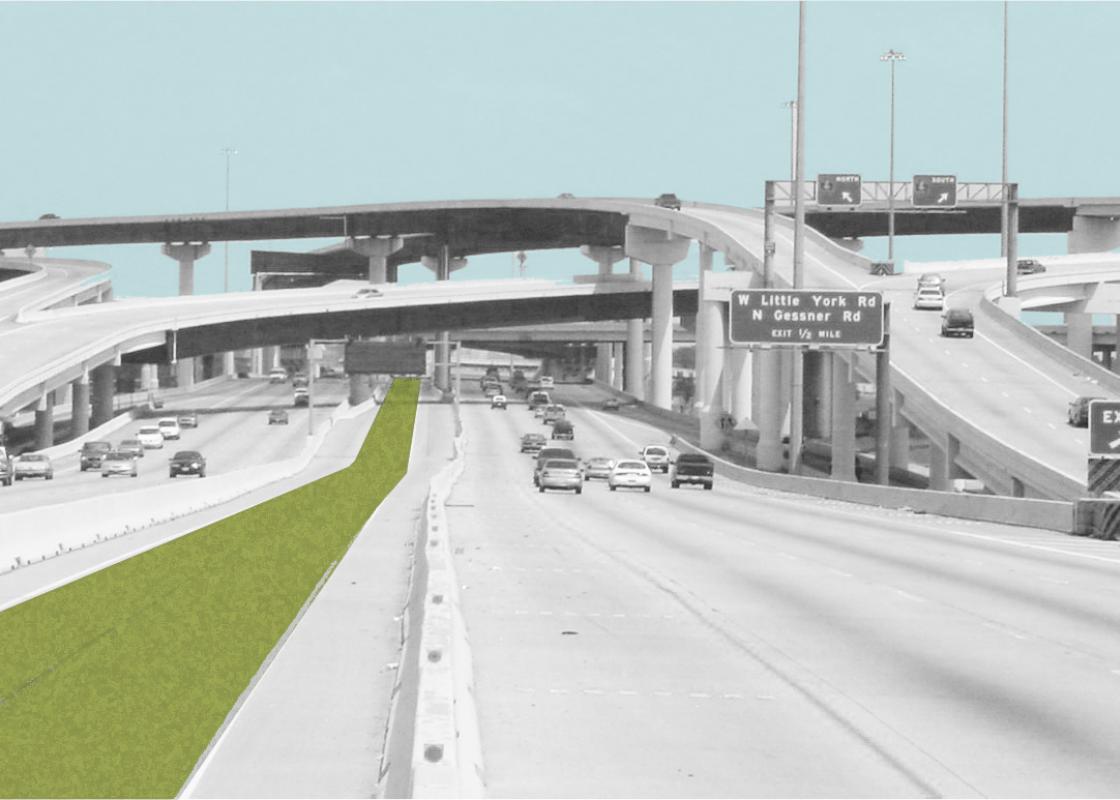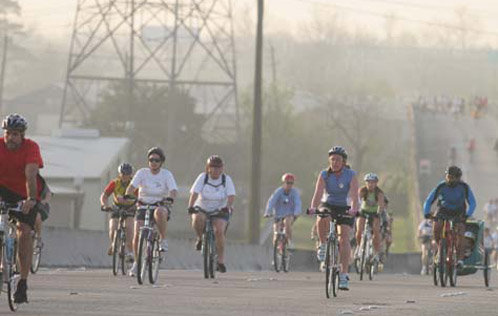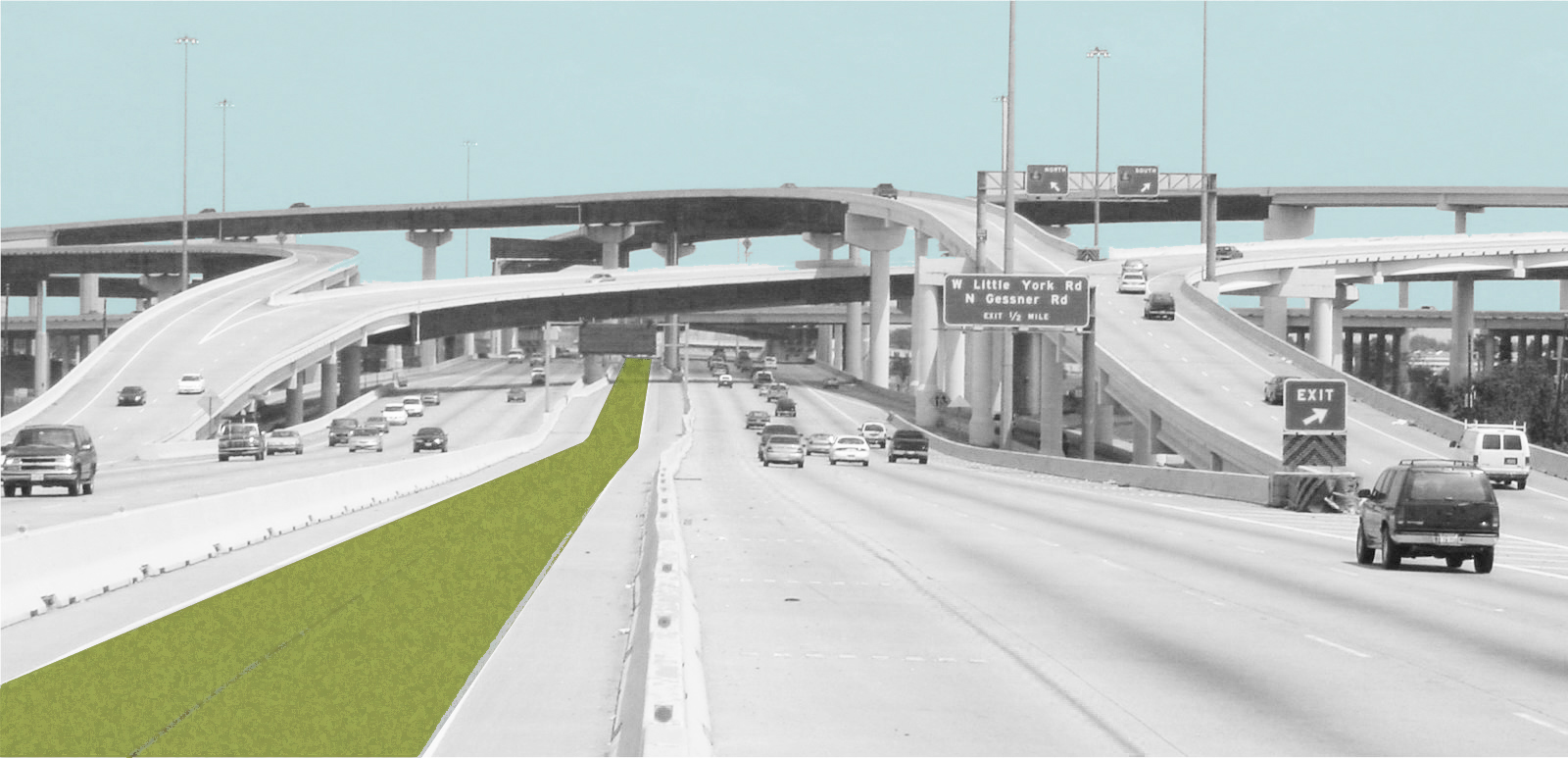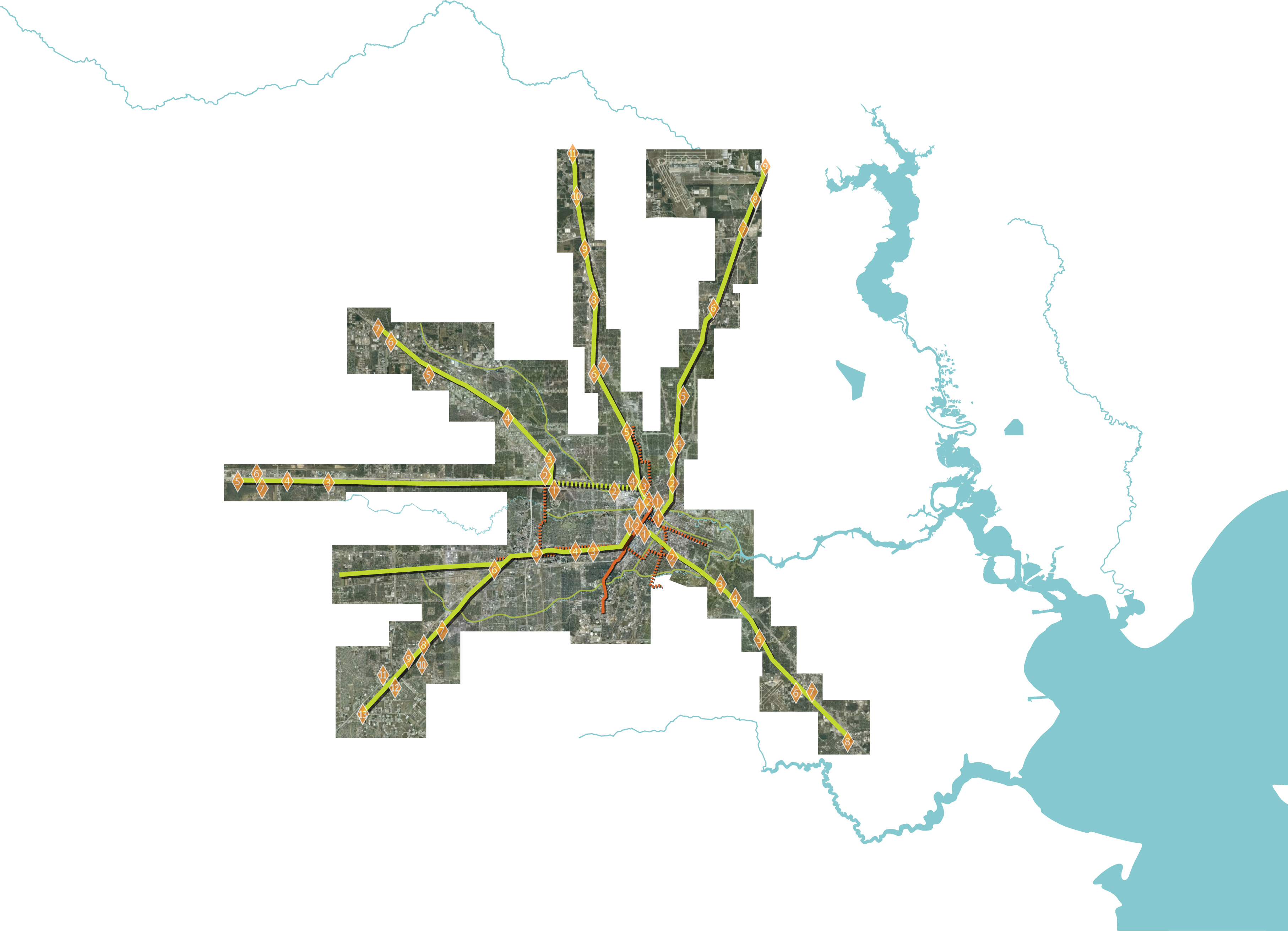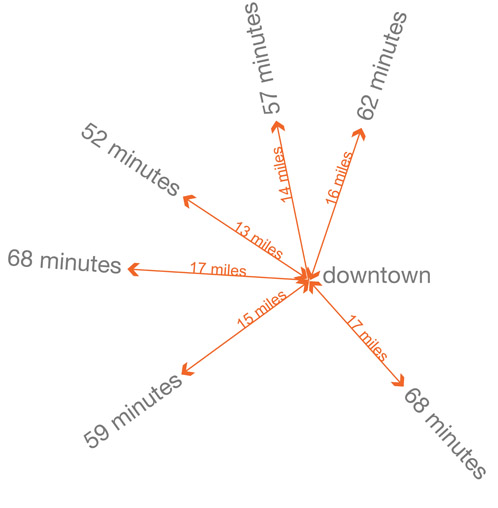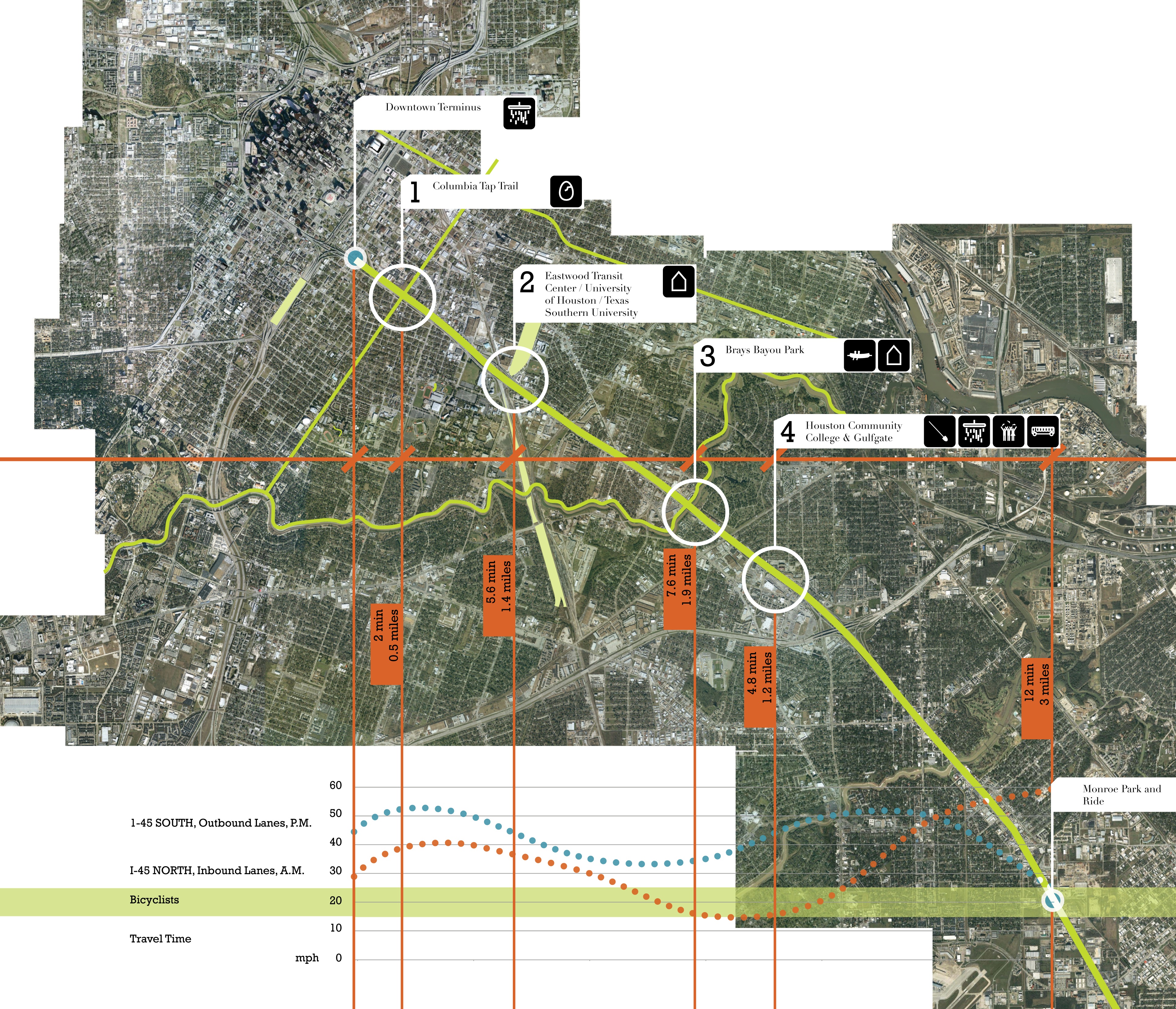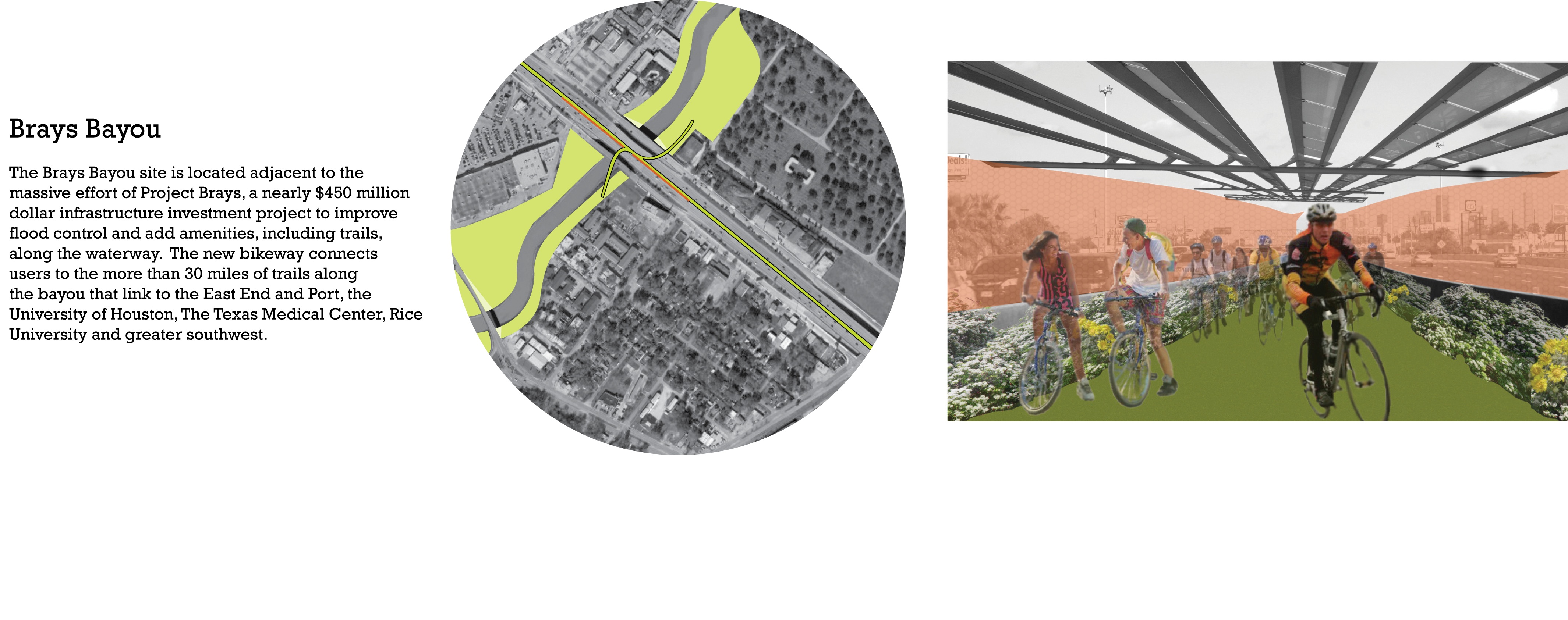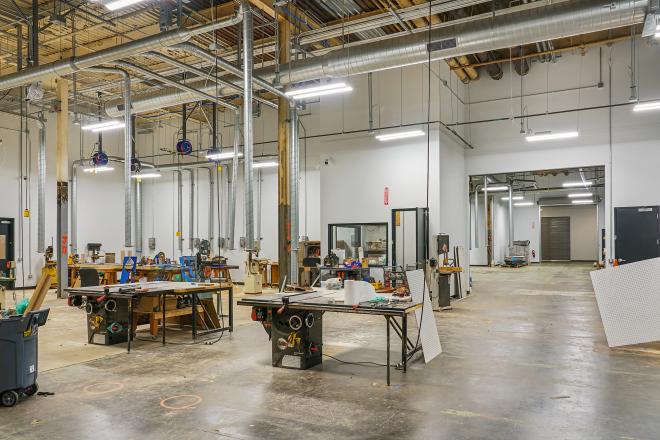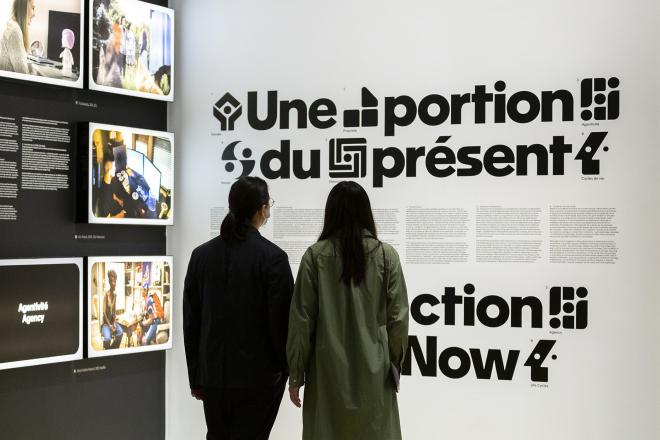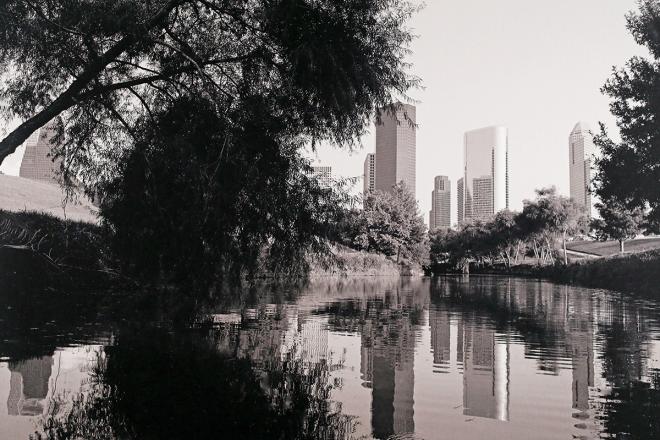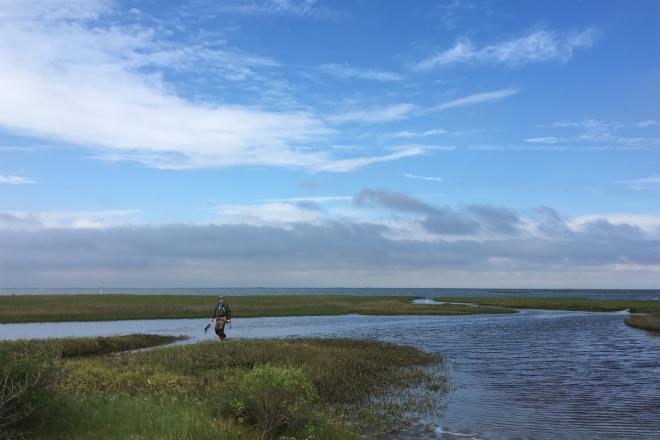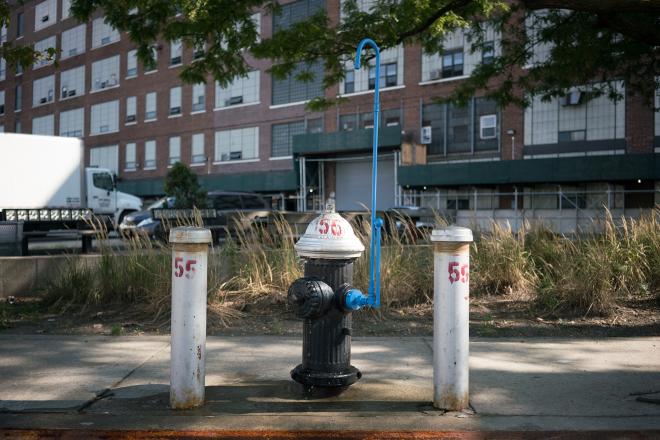What if we re-imagined that public infrastructure was for people instead of automobiles and re-prioritized our spending in favor of alternative transportation? What if we re-purposed the networked infrastructure of the HOV lane into a bike-way --- with non-stop, easy access service to points throughout the city?
Appended to the freeway system are 100 miles of high occupancy vehicle (HOV) lanes. Every day the lanes carry more than 200,000 drivers and passengers (43,225 by bus, 2,500 by vanpool, 74,687 by carpool, and 407 by motorcycle).
While the HOV lanes provide a viable alternative to the single occupancy vehicle, the billions of dollars invested in the network do not challenge sprawl, a sedentary society, or the challenges facing our environment.
In fact, the State of Texas’ recent submittal for “shovel-ready” projects was weighted 80 to 1 in favor of freeways over public transit systems, a number that is comparable to the 72 to 1 ratio of freeways miles to light rail line miles in Houston.
The creation of additional bikeways does not suggest that HOV lanes would be eliminated. Instead, bike lanes would be created in the existing HOVs and new diamond lanes would be added to the left lane of the freeways; ultimately generating greater flexibility for drivers and cyclists.
The proposed bike lanes would make it possible in most cases to travel from the fringe to downtown in about an hour. In addition the new infrastructure could be connected to existing trails and bayou trails to create a networked system linked to major destinations.
A closer look at the Gulf Freeway corridor underscores the potential of the idea. More than 150,000 people live within a mile of this corridor, one of the densest in the city.
For two hours each day it would be faster to bike than to drive, and if just 10 percent of residents could be convinced to bike, more than 15,000 cars could be taken off the road.
And if we look at the 8-mile corridor between Monroe and downtown we can begin to see how the proposed system could connect to points throughout the city, including: the Gulfgate Mall, the 30-mile trail system along Brays Bayou connecting to the Medical Center, the Eastwood Transit Center and University of Houston, and the Columbia Tap Trail in the Third Ward where 1 out of 3 residents depend on alternative transportation modes.
Clearly additional programs and spaces would have to be introduced in conjunction with the greater number of bikeways. There would be a need for rest areas and solar lighting, sound and pollution filter walls to neutralize pollutants, protect riders and buffer noise, new park-and-cycle lots with bike racks, lockers, restrooms, water fountains, and strategically located showers.
The alternative --- our present embrace of the automobile --- is daunting. Houston is home to a steadily increasing population of 2.2 million consumers who regularly navigate more than 575 miles of freeways. The freeways travel outward in 14 different directions and are connected with 3 rings with a fourth forthcoming.
Houstonians spend an average of nearly 5 hours commuting between their home and work every week—over 250 hours per year. Double that number for two working adults and a family can generate roughly 20,000 pounds of carbon dioxide every year. It’s clear why the United State makes up only 5 percent of the world’s population but generates 45 percent of CO2 emissions.
What if we could inspire Houstonians to modify their behavior and convince them to change their mode of transportation from automobiles to bikes? And what if we combined investment in public works with investment in civic infrastructure that connected users to programs to networks? What if....


